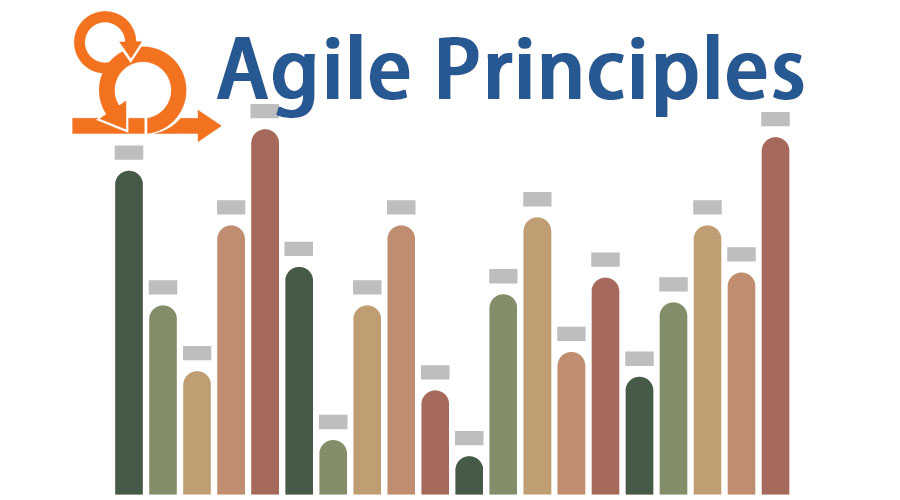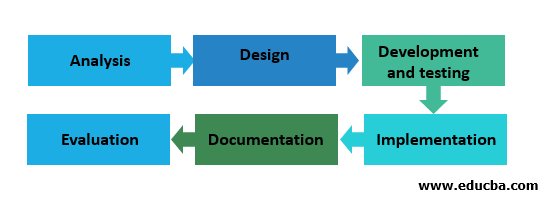Updated May 25, 2023
Introduction to Agile Principles
The following article provides an outline for Agile Principles. Thirty years ago, people did not have the idea of automation or information technology. Once the computer was invented, the world started changing rapidly. Considering recent events, we have seen a lot of changes, for example, from floppy disk to cloud storage, from a room full of computing machines to smartphones. All these advancements wouldn’t be possible without technology and innovation. Here we are going to learn about Agile and its Principle.
When it comes to technology, every day, new technology is invented. The term technology is not just related to Information technology; it applies to business, government, hospitals, etc. So technology and software development goes hand in hand. In layman’s terms, software development is an integral part of technology. The software development process means dividing software development work into different phases to improve the design, product management, and project management. Another term coined with software development is the software development life cycle.
The software development life cycle, also called SDLC, defines a process that includes planning, creating, testing, and deploying software. Ideally, SDLC consists of six steps.
Different Types of SDLC
Given below are the different types mentioned:
- Waterfall model
- V-shaped model
- Evolutionary prototype model
- Spiral model
- Iterative and incremental model
- Agile model
What is the Agile Model?
Most companies have adopted the agile method of software development. It is a method wherein we use display boards like Kanban and methods like scrum. This agile methodology is adopted because it improves the agility of software professionals, teams, and organizations. In agile, the solution for any work will be through collaboration between self-organizing and cross-functional teams.
In other words, agile is a process that allows teams to focus on delivering the highest quality in the shortest time. It uses an iterative approach wherein each work will be reviewed repeatedly until its goal has been met.
12 Principles in Agile Methodology
Manifesto for agile Principle is based on twelve principles they are as follows:
- Customer satisfaction by delivering the software early.
- Accept the change requirement, even in the later stage of development.
- Delivering the software frequently.
- Daily co-operation between business people and developers.
- Projects are built around motivated individuals who should be trusted.
- A face-to-face conversation is the best form of communication (co-location).
- Working on the project rather than planning.
- Sustainable development, able to maintain a constant pace.
- Continuous attention excellence and better design.
- Maximizing work efficiency.
- The best design, solution, and architecture emerged from self-organizing.
- Regularly meeting to discuss the team’s improvement.
1. Customer Satisfaction by Delivering the Software Early
In the agile method, we give the utmost importance to customer satisfaction. Here, the aim is to provide the customer with an early and continuous delivery of valuable software. There will be periodic interaction with the client about the ongoing software development cycle.
2. Accept the Change Requirement, Even in the Later Stage of Development
When the team is working on the deliverables, and there is a new request or a change from the client regarding the ongoing development, then agile helps us to harness that request and adopt the change requested by the client to continuous development. This allows the client to reach the goal easier and the team to adapt to that change. It’s hard to adapt to change when developing software, but change could be good if we can react to it fast.
3. Delivering the Software Frequently
When we can deliver the product periodically, it helps identify the required changes and miscommunication, if any, with the client. Rather than delivering after all the development in which the developer cannot entertain any changes requested by the client. In this method, we can give incremental development and consider any changes the client requests. Let us move to the next Agile Principle.
4. Daily Co-operation Between Business People and Developers
Daily interaction with the business people and developers helps the developers work in the right direction and adapt if the customer requests any changes. And the client will be aware of the progress that is happening in the team. This makes the work happen smoothly and transparently.
5. Projects are Built Around Motivated Individuals; who Should be Trusted?
When people who are motivated to work are given the environment and support, they need to complete the task. Then it will benefit the client and the developers to reach the desired task. Having trust in the developer and standing by their side will help them to work comfortably. There won’t be any necessity for the micromanagement of the individuals.
6. Face-to-Face Conversation is the Best Form of Communication
When having a face-to-face conversation, we can convey information effectively and efficiently. Though sometimes developers will be in different places, an effort should be made to communicate, if possible, face to face.
7. Working on the project Rather than planning
Working on the software should be the primary target. When working on it, the developers must concentrate only on the development. But, if you concentrate on following the plan, the developer will be diverted to activities like documentation, etc.
8. Sustainable Development, Able to Maintain a Constant Pace
Agile helps the developers to maintain a constant pace throughout the development cycle. This is termed constant velocity, and we can measure the team’s potential. So that in the future, we can take up the work based on the team’s velocity.
9. Continuous Attention Excellence and Better Design
The ability to give continuous attention to development indicates that the team strives to satisfy the customers. It’s the ability to provide the best to the owners.
10. Maximizing the Work Efficiency
Agility involves eliminating costs that do not provide value. Keeping the work simple rather than complicating it with unnecessary things is a specialty of Agile.
11. Best Design, Best Solution, and Architecture Emerged from Self-Organizing
A cross-functional team can be called a self-organizing team. These people are the best in the business; they will help the client reach the goal with the best advice, work, and solution.
12. Regularly Meeting to Discuss the Team’s Improvement
This is a significant part of the agile practicing team. A project review will take place upon completion of the project. This will help the next client to approach differently. After each scrum ends, the team will hold a retrospective event to identify areas for improvement and reflect on the lessons learned during the process.
Recommended Articles
This has been a guide to Agile Principles. Here we discussed the basic concept, 12 principles in agile methodology, SDLC types, and what an agile model is. You can also go through our other suggested articles to learn more –





